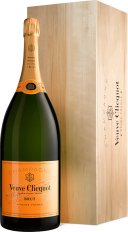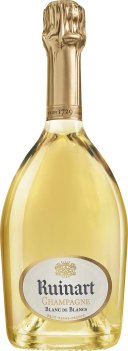Any price
Billecart-Salmon Brut Rosé
Chamapagne Rosé is a true delight to the senses and Billecart-Salmon rightly takes its place in the top echelon. A vibrant Salmon pink colour greets the glass, with a long, smooth, delicate, elegant and refined palate to follow. Without the price tag that others of this quality demand, this is a Champagne that all must enjoy at least once.
Billecart-Salmon Brut Sous Bois
This unique cuvýe is respectfully composed of the three champenois grape varieties - Chardonnay, Pinot Noir and Pinot Meunier. Entirely vinified in oak, Sous Bois (under wood) totally masters the art of blending by renewing the ancestral spirit and savoir-faire of the original Champagnes. The nose contains defined aromatics of dry fruits and fresh citrus, coupled with finely buttered seductive notes that expresses the mature complexity linked to the vinification in oak barrels. The palate is bursting with flavours of grilled brioche, vanilla and toffee, complimenting the refreshing texture and exceptional finish.
Ruinart Rose Non-Vintage
Billecart-Salmon, Brut Vintage
Moet & Chandon Imperial Brut Non-Vintage
Moët & Chandon Impérial Brut Champagne Brut Impérial is Moët & Chandon signature house cuvée and the worlds best-selling Champagne. Established by Claude Moët, the house can trace its history back to 1743. Blended from over 200 crus, bringing together the structure of Pinot Noir, class of Chardonnay and the suppleness of Pinot Meunier.
Billecart Salmon Brut Reserve Non-Vintage
NV Billecart Salmon Brut Reserve, A satiny white mousse sits well over a straw pale gold tinged base that’s finely threaded by a steady stream of delicate bubbles. Strong yeasty baked bread characters intermingle with oily toast, cashew, citrusy honey and brioche notes. Rich yet tense and tightly knit on the finish the palate features mouthwatering flavours of baked bread, citrus, oily toast like characters and yeast lees with some roasted almonds on the dry crisp finish. Long precise aftertaste that has a lingering subtle dried nut element to it. A very dry and focused Champagne that requires some patience.
Veuve Clicquot Brut Yellow Label Champagne Non-Vintage
Veuve Clicquot Brut Yellow Label Champagne Nv. A Champagne from the fuller-bodied school with flavours of buttered toast, brioche and biscuit to complement the ever present fine acidity and flavour length that is a trademark.
Delamotte Brut Non-Vintage
Delamotte Blanc de Blancs Non-Vintage
Ruinart Blanc de Blancs Non-Vintage
The House of Ruinart stands in a league of its own, defying convention and captivating with its unique legacy. Founded in 1729, it holds the distinction of being the very first Champagne House, a visionary endeavour inspired by the foresight of a monk who possessed a remarkable intuition far beyond his era. In the heart of the Champagne region, specifically in Reims, a significant moment unfolded on September 1st, 1729. It was then that Nicolas Ruinart, driven by the profound influence of his visionary monk uncle, drafted the historic charter that marked the birth of Maison Ruinart, forever etching its name as the world's pioneer in champagne production. Little did they know that this bold initiative would pave the way for an enduring enterprise that thrives and prospers even after nearly three centuries, leaving an indelible mark on the course of history. During the remarkable period of the mid-18th century, Ruinart made a significant acquisition to enhance its champagne production. The House secured ownership of ancient crayères, subterranean chalk quarries meticulously carved beneath the historic city of Reims. These extraordinary caverns served as the ideal sanctuary for storing their precious bottles, ensuring optimal aging and maturation. Building upon its reputation for innovation, Ruinart continued to push boundaries. In 1764, the House achieved yet another milestone by successfully shipping the first-ever Rosé champagne across the vast expanse of Europe. This ground-breaking achievement introduced a new dimension to the world of champagne, captivating connoisseurs with its captivating hues and captivating flavors. Bestowed with nobility and adopting the esteemed name Ruinart de Brimont in 1817, the family has diligently guided the House for over two centuries. With each passing generation, a new Head of House emerges, bringing forth their unique talents and unwavering commitment to serve the lineage of Ruinart. This steadfast succession ensures the preservation of the family's legacy, as each successor devotes themselves to upholding the traditions and values that define Ruinart. Their collective efforts have propelled the House to unparalleled heights, solidifying its reputation as a bastion of excellence in the world of champagne. Ruinart Blanc de Blancs embodies purity of the Chardonnay grapes from which it is made exclusively. Made primarily with Premiers Crus from the Cote des Blancs, and Montagne de Reims Terroirs, it is intensely aromatic. The blend is 100% Chardonnay from various years (20 to 25% of which are reserve wines from the 2 previous years). The nose is powerfully reminiscent of fresh fruits with dominant notes of citrus and exotic fruits, followed by a touch of jasmine, white peaches and pink peppercorns. A perfect champagne for aperitifs, particularly in spring and summer. It is an excellent complement to seafood and shellfish; perfect with a sea bass or bream tartare. It would also be very good with seared sole. Note - this item does not come with a gift box.




















